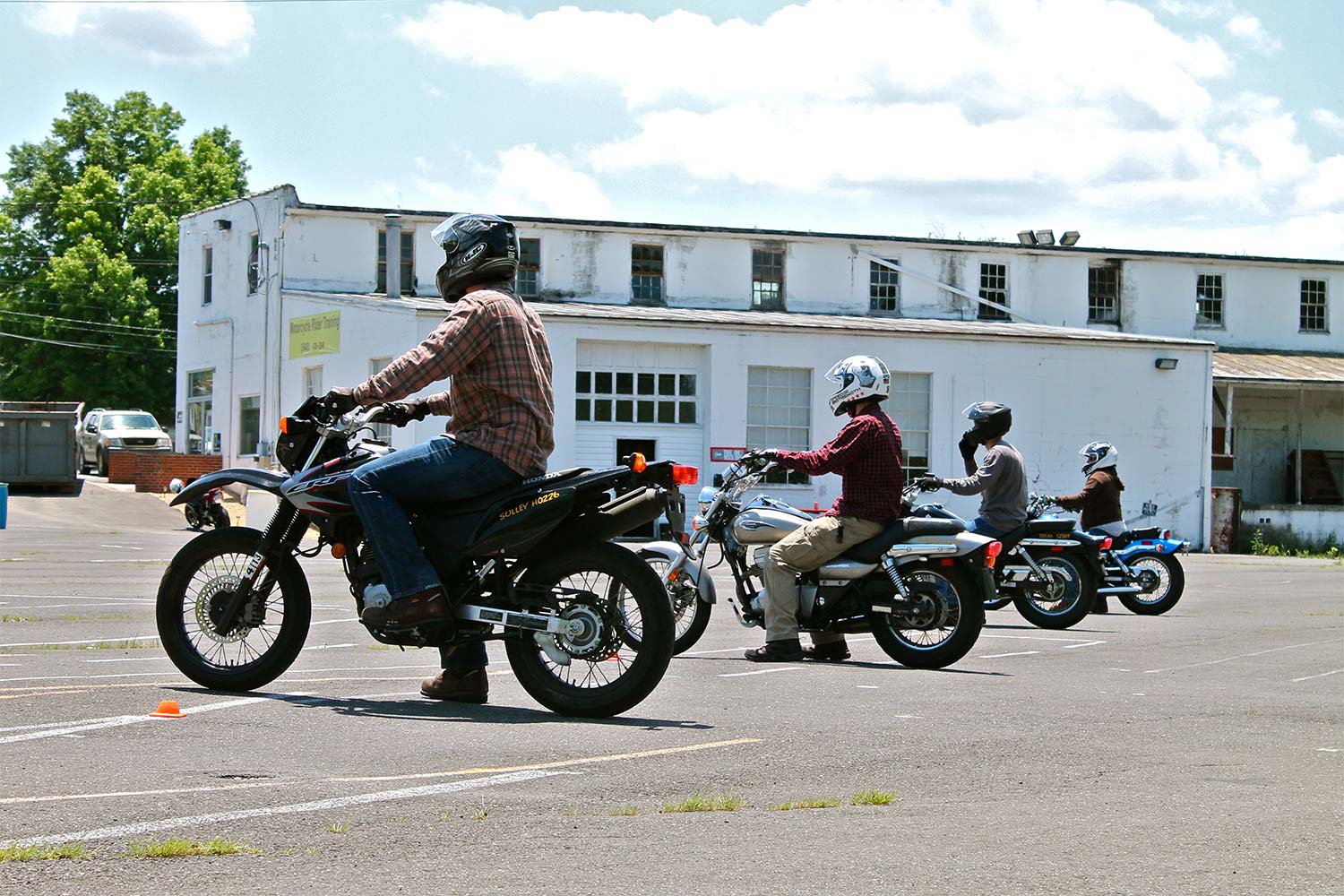Introductory Motorcycle Experience
Motorcycle basics for any beginner wanting to have a first motorcycle ride.
A two-hour, first-touch motorcycle experience. Designed to familiarize you with a motorcycle’s primary parts and controls, and help you determine whether motorcycling is a good personal choice. You are given the opportunity to ride a motorcycle in a controlled area. This is an excellent way to explore motorcycling.
General Information
The Basic RiderCourse teaches the basic mental and physical skills needed for riding. In some states, this course provides a waiver of the written and/or riding licensing tests.
- Pre-requisites:
- Able to balance and ride a bicycle
- Possess either a driver’s license or motorcycle learner’s permit
- What to Expect
- 2-hours of instruction
- You’ll be with the same group for the duration of your training
- You’ll receive individual RiderCoach feedback
- Motorcycle/scooter, helmet and gloves are provided
- What to Bring
- Food/beverages for breaks and lunch
- Your own riding gear. See list below.
Riding Gear Requirements
Helmet — we have helmets you may borrow if needed
Helmet - Full-face, 3/4 helmets are acceptable, provided that they meet minimum DOTcertification. Personal helmets are subject to inspection for the DOT certification and that they are in good working condition. 1/2 shell helmets are not permissible.
Eye Protection
Eye protection - Face shield, goggles or some form of sun/eye glasses. They may be tinted or clear. Ordinary prescription glasses may be worn. For night training eye protection must be clear.
Long Sleeves
Long sleeve T-shirt or dress shirt that reaches the wrist or jacket are all acceptable.
Sturdy Pants
You must wear pants! No exceptions. Denim or leather jeans are preferred. All pants are required to have NO holes in them and must come down to the foot. Dress slacks, spandex, leggings, and sweatpants are NOT permissible.
Full-finger Gloves — we have gloves you may borrow if needed
Must be full finger and cannot be open on the back of the hand or knuckles. Gloves must be motorcycle specific or sturdy leather or synthetic. (Dishwashing gloves and surgeon's gloves are NOT permissible)
Over-the-ankle Boots or Shoes
MUST completely cover your ankle, have little to no heel (NOT cloth, canvas, etc.), and have a good rubber sole for traction. Thin fabric shoes made of canvas or other non-boot fabrics are not permissible.



